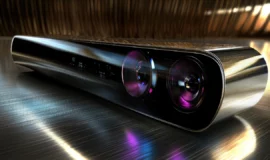
QD-OLED is a new display technology that combines the very best of OLED and QLED. In a way, it can be said that QD-OLED is a step above both OLED and QLED technologies.
In a nutshell, what QD-OLED does is that it takes high brightness and color saturation from QLED and combines them with pixel-level image precision and rich blacks of traditional OLED.
This new technology is found in 4K TVs and for now only Samsung and Sony’s 55-inch and 65-inch TVs are offered with QD-OLED.
For a layperson, it suffices to know that the latest QD-OLED technology takes the already impressive qualities of traditional OLED TV to the next level. But it comes with a price. For example, Samsung’s 55-inch OLED 4K Smart TV (2022) can cost you around $1,600, while the same screen Samsung QD-OLED TV would cost you around $2,200. Is the price difference of almost $600 justified? Let’s find out.
However, to do an objective price comparison of the two, we must first show how the two technologies work, so we could identify the key differences between the two.
How Do OLED and QD-OLED Technologies Work?
In a traditional OLED TV, the OLED panel creates a white light source that passes through color filters to create the blue, green and red components of images. Since the white light passes through the color filters therefore it dims which to make up, a white sub-pixel is added to the OLED panel to increase the brightness level.
In the QD-OLED TVs, a blue OLED light source is used and instead of color filters dimming the light, a light-emitting quantum dot layer generates the red and green color components of the image.
In short, in the OLED technology, light passes through color filters, while the latest QD-OLED technology uses a quantum dot layer which helps it reach higher peak brightness. A white sub-pixel is not used in the latest technology, helping QD-OLED TVs display rich and saturated colors.
OLED Vs QD-OLED: Picture Quality Differences Worth Paying Extra?

If you want to tell the picture quality difference between the two TVs, sit at an extreme off-center seat. You are likely to find OLED display colors pale in comparison.
This brings us back to our main question: should anyone pay $600 extra for peak brightness?
As mentioned earlier, the difference is stark when you view the two TVs sitting at an extreme off-center seat. But then how many would sit at an extreme off-center seat to tell this difference?
Furthermore, some OLED TVs like Sony’s A80K can achieve 100 percent coverage of the DCI-P3 color space, so achieving color richness and saturation isn’t entirely lacking in some regular OLED TVs.
All being said, QD-OLED is currently the only display technology that achieves the highest possible level of picture quality. If you are a stickler for boldness to HDR images and subtle color and tonal shading which makes QD-OLED TVs stand out, then you should consider paying $600 extra. Otherwise, the traditional OLED TVs are “equally” good, especially when you are paying $600 less.
If you are looking for OLED TVs in Pakistan, OLX Pakistan has them in abundance.
You may also like to read:








Leave a Reply